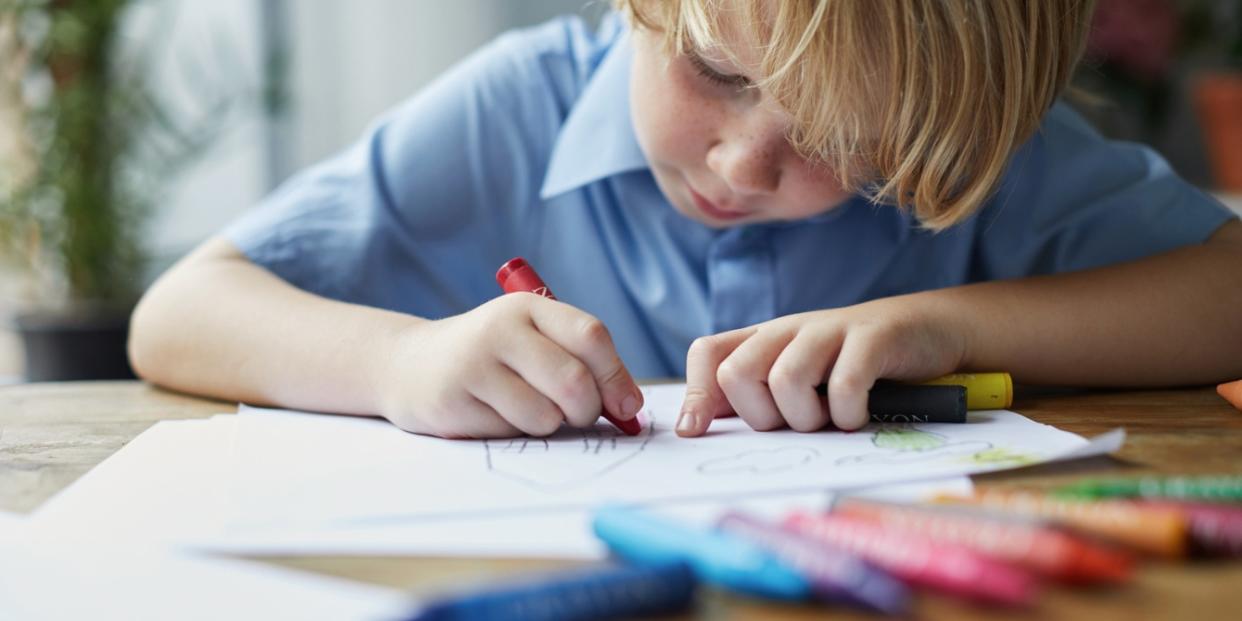The creative parent method: 3 ways art therapy can build self-esteem with young kids

Elementary-aged children are learning to engage with the larger world. From building a healthy self-esteem, to negotiating the ever changing landscape of friends and interests, this is a time that calls for laying a foundation for emotional intelligence. A strong sense of connection and belonging at home provides a safe place to unpack and recalibrate each day.
According to Erik Erikson’s theory of emotional development, 5-12 year olds are working through industry vs. inferiority. Industry reflects what your child feels good at doing. Inferiority surfaces when your child feels insecure when they struggle. As parents, it’s important to normalize this while providing guidance and support to find solutions and techniques that work.
Interactions with other adults influence how your kids feel about themselves. While you can’t always protect your child, you can provide comfort and validation of their feelings.
As an art therapist of over 20 years, I’ve learned that kids’ emotional learning is heavily influenced by the reactions of the trusted adults in their lives. When you show acceptance of their feelings, you model self-respect, which is crucial for healthy self-esteem. Once they feel seen and heard, then it’s time to work on a solution.
Art therapy is a powerful tool for self expression, because it helps you become aware of the less conscious aspects of your experience. This makes it easier to soothe distress. I’ve designed the following exercises for elementary-aged children with their specific needs in mind.
3 art therapy projects for building emotional intelligence
Each exercise comprises two steps: First is to do the art project—getting the emotion off your chest. Second is to describe what it represents—helping you find deeper meaning and understanding. There’s no right or wrong way to do it; you don’t have to be an artist either. Let your creative instincts take over.
1. Me as a superhero
This is your child’s opportunity to think about what makes them feel confident and proud. After they draw their superhero, write a hero’s journey story together. In the story, include what the problem was and how their superpowers helped them overcome it.
Draw your own superhero too and see what they have to say to one another. Your child might love having the chance to share what they think your superpowers are.
Bring out the superhero character when they’ve had a hard day or there’s a tricky situation that needs to be solved. Playfully engage your superhero when the tension gets high or something needs to get done.
2. The monster that scares me
Everyone has fears and one antidote is to talk about them. This is an opportunity for you to share what caused you dread when you were young, which helps your kids feel less alone. Fears are easier to deal with or tame when you can see them.
After drawing, ask them to write down anything that the monster says. This gives you insight into how they’re experiencing their anxiety. You can take it a step further and act out the monster to one another.
Together, find a creative solution for dealing with the monster. Some may want to destroy them, others may be drawn to being kind to their monster. What’s most important is that your child feels empowered to believe they can find the solution.
3. My feelings as a volcano
This is a wonderful way to slow down the rapid energy surge that comes with strong feelings. This practice is useful for when they’ve seen someone get angry too. It gives them the chance to process what that was like and helps to build empathy.
Start by having your child draw out what it feels like inside when they’re really upset, angry or even happy but not in control of their body. Then, ask your child to draw what will help the volcano feel better. This introduces self-soothing skills and helps your child feel like they can solve problems as well.
Once they’ve practiced this exercise, encourage them to try it when they notice their volcano is waking up. Set aside art supplies and paper so that they have easy access.
Elementary school years are a tender time and it’s OK if it feels a little tough to navigate some of these big emotions. These exercises are designed to help you and your child work through the feelings that arise. May these recommendations for art therapy help you to feel more capable as a parent and more connected as a family.

